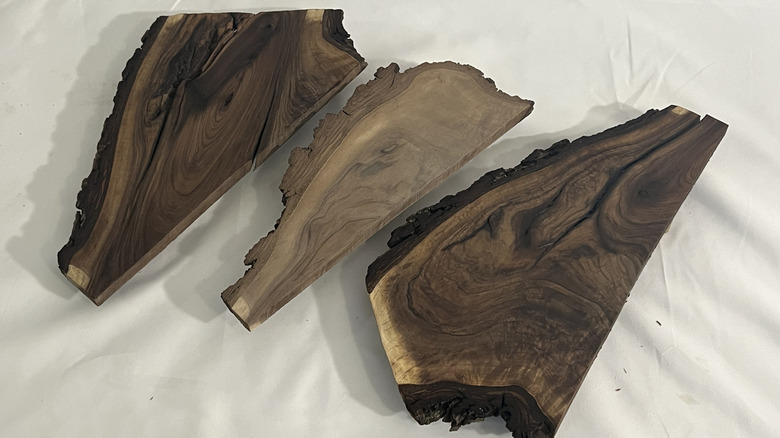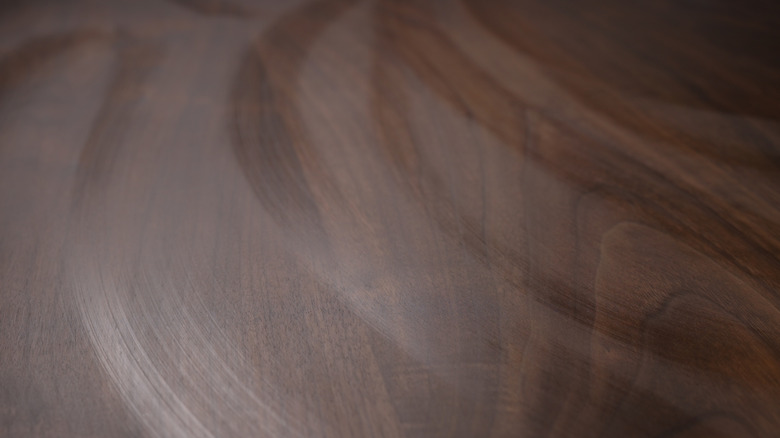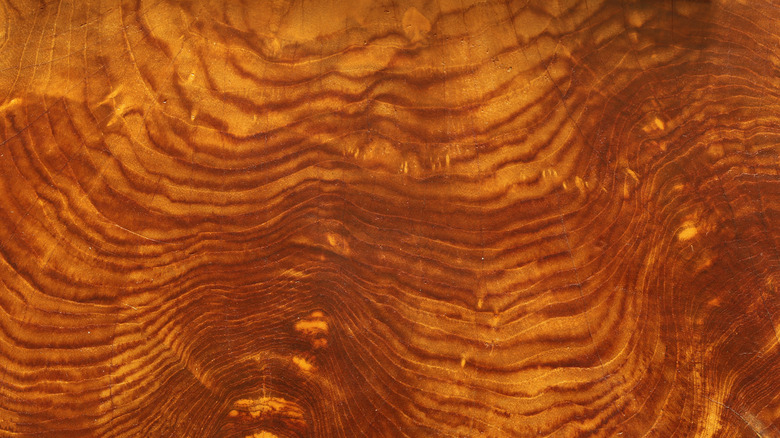The Woodworkers' Magic Secret To Achieve The Wood Finish Of Your Dreams
When people find out that I am considered an expert woodworker, many of them ask what is the easiest, no-fail wood finish that I can recommend. I get it: well-finished wood is beautiful and poorly finished wood can be distressing to see. I recommend hard wax oil finishes, which have become more available in recent years. They can be applied by even the most novice DIYer with wonderful results.
There are many versions of hard wax oils on the market but they are all made by blending various plant-based oils with a variety of waxes. Some, like this Interbuild option, have zero VOCs (volatile organic compounds), which are the stinky and somewhat dangerous vapors you find in some finishes. Some are low VOC finishes. Many claim to be one-coat finishes, but take that with a grain of salt — many of those that I've used have benefited from a second coat. They dry to a low sheen, but can be buffed out to a lovely satin shine.
Some hard wax oils come in a two-part formulation with a drying agent that speeds up the cure. With the drying agent, it takes about a week to fully cure, although you can touch it in 24 hours. Without drying agents, it is about three weeks to achieve a full cure, making it similar to linseed oil. They protect wood surfaces well and are super easy to touch up if a finish gets harmed over time.
Laying the hard wax finish on thick
While there are some small differences between brands regarding application of hard wax oil, the basic process is very similar. First, prepare the surface well. I recommend sanding up to 320-grit. Brush or vacuum the sanding swarf off, then wipe it down with mineral spirits to deep clean the pores of the wood. Allow the mineral spirits to dry. Then, you're ready to apply the hard wax oil. Most brands recommend applying a thick coat of the oil, but not flooding it on. Think of Goldilocks, not too much, not too little — just right. I apply it with a maroon synthetic pad, rubbing it on in a circular motion. Apply more oil to areas that look dry.
After several minutes (go by brand for the exact time), wipe off the excess with a clean soft cloth. Rub the cloth with the grain and don't just tickle it: rub it like you mean it. When you've removed the excess, let the hard wax oil dry. Some folks continue buffing at this point with a clean soft cloth or even a buffer, but I apply a second coat and wait until afterward. For the second coat, use a shop towel to wipe the surface clean of any dust that may have settled overnight, and apply the oil the same way as you did the first time. After wiping the excess finish away, you can buff the finish by hand or with a buffer. Buffing will lift the sheen from a low luster to a satin sheen.
Pros and cons of a hard wax oil finish
Even though I think of myself as extremely competent when applying all sorts of wood finishes, if I had to limit myself to just one, hard wax oils would likely be my choice. They provide good protection for wooden surfaces: not quite as much as oil-based polyurethane, but hard wax oil finishes are much easier to repair. A damaged poly finish needs to be sanded down and refinished with hard wax oil, a small amount of sanding, and another coat of oil on the damaged area only to fix the problem. Another benefit is the ease of application — wipe it on and rub it off, now you're done. These oils really pop the grain of the wood, highlighting its natural beauty. So, easy to apply, durable and beautiful. What's not to like?
One point against them is that hard wax oils are frankly expensive, but the value equation is one to consider. While buying a bike helmet, a salesman once told me, "If you've got a ten-dollar head, go ahead and buy a ten-dollar helmet." With finishing products, you generally get what you pay for and quality does not always come cheap. Hard wax oils usually come with a premium price tag when compared to other finishes. And as mentioned, hard wax oils take forever to cure: from a minimum of seven days with a hardener up to three weeks. And finally, in my opinion, they don't generally produce a shiny wood finish. For some this could be a benefit. But if you are looking for a super-easy no-fail finish for your woodworking projects, hard wax oils are the answer.


